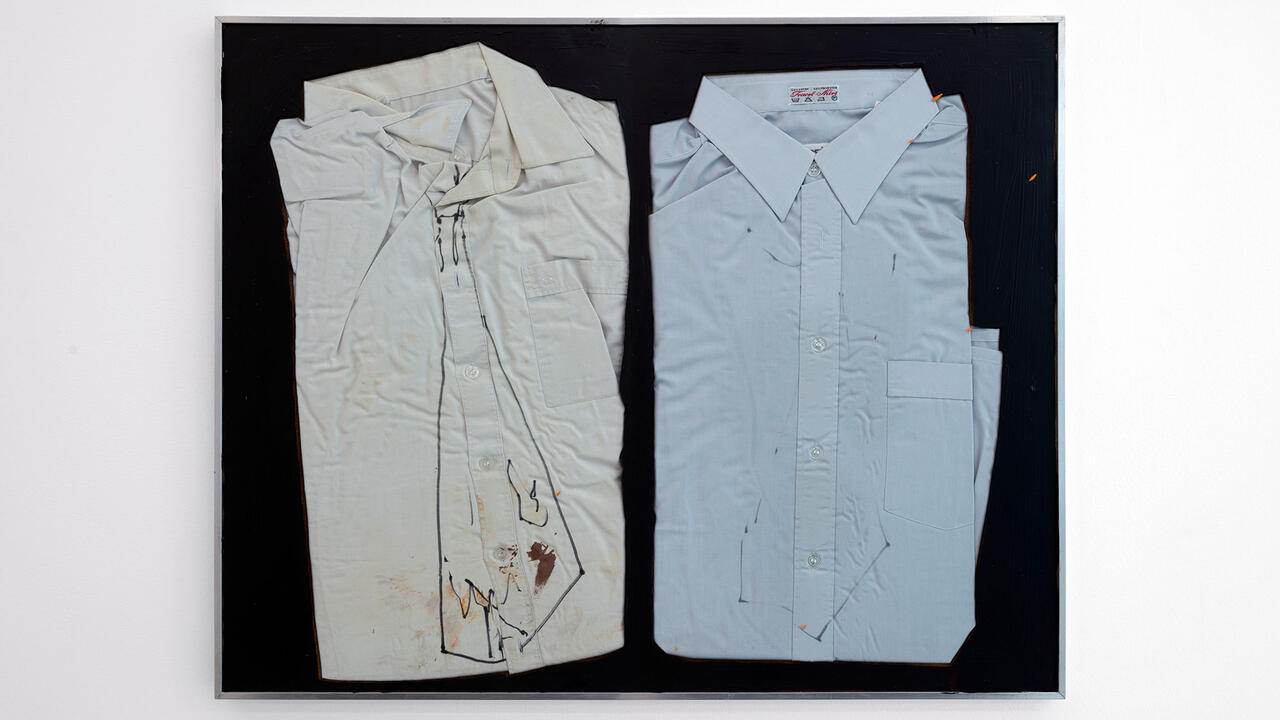(e.) Twin Gabriel
Baneful and interwoven with anarchy, Pink Floyd's The Wall (1980) was one of Western culture's most impressive expressions of apocalyptic ideology. Then the 80s arrived with their preference for irony over revolution - even the collapse of the Berlin Wall was more a reflection of commerce than radical politics. The nihilism of The Wall seems exotic today - its sex, drugs, women and razor blades were allegorical, not fashionable, its surreal animation and rock anthems more metaphysical than intentionally marketable.
(e.) Twin Gabriel is the collective name for artists Else Gabriel and Ullf Wrede. Originally from East Germany, they produced a momentous, driving video Belle Indifference (Urban Legends and Paranoia) in London during 1997. Exploring the combined experience of pregnancy and a year in a foreign environment, their techno/birthing video evokes the same surreal and primal states as The Wall but to different ends. The visionary nature of Belle Indifference is more buoyant and anticipatory than rancid and impugning.
Images of speeding through the sterile tunnels around London give way to brief flashes of a pregnant woman, her huge body moving through an ambiguous landscape. Strings of flickering street lights, traffic and road markers pulse to the sound of the artist's continual screams. Exhibited as a large video projection, the ritualised screaming from the video permeates the gallery. These guttural cries are not sounds of anguish or terror but of certainty and health. The screaming continues as does the obvious birthing symbolism, until at one point it stops. A squeaky Techno beat and sequence of still-frames of the pregnant, fist-pounding woman in a swim-suit and platform shoes takes over. She strikes powerful poses in front of modern office towers. With low angle shots, this figure in her third trimester of pregnancy is monumental. Aeroplanes cut across her space. Her bigness dwarfs traffic signals. A man in a skin cap and goggles is interspersed into the series of pulsating images. He too is large and rubbery in comparison with the deserted urban backdrop.
Belle Indifference takes its cue from subversive films from Eastern Europe. Absurd, and laced with Kafkaesque existentialism, its social commentary re-configures the idioms of anxiety and discontinuity, tensions which arise from situations beyond human control. It is both a metaphor for birth and an exalted, adventurous journey into Capitalist society's cars and Modern architecture. The powerful poses the couple strike symbolise human strength, flexibility, innovation and tolerance - the aesthetics of a surreal apocalyptic vision inverted into smiling optimism and dance music.
The wall-mounted video stills included in the exhibition don't emanate the same life-drive and urgency as the video. Without the explosive and elliptical camera work that provides complexity to the video's allegorical underpinnings, the prints read as strictly promotional material. But Belle Indifference is anything but static. It may be brutal, even ugly, but its politics don't picture society in a corrupted decline, rather ani-mated with potential. If the video challenges anything, it is human sedentariness. Constructing a new archetype from the incongruencies, perversions and symbols of anarchy is neither indifferent nor ironic. (e.) Twin Gabriel hasn't given up on the visual language of allegory, but is redesigning it for a confident world defined by speed, balance and new life.














